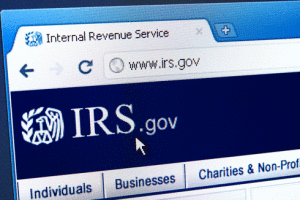Contrary to the popular belief, there is nothing at all to worry about filing a tax extension as quite surprisingly filing extension applications often serves benefits to the applicant. If an individual or a professionally managed business has not been able to complete its current year federal tax return documentation by April 15th it is completely regular and legal to apply for extending the deadline six months back to October 15th. Often general populace suffers from the misperception than filing for an extension is troublesome and requires professional help, whereas the reality speaks the opposite. With the advancement in online e-filing facilities applying for an IRS tax extension is a matter of minutes. The blog tries to take a common user through the simple steps of filing a tax extension.
 E-File your tax extension online
E-File your tax extension online
Several popular tax extension web services these days provide and equip you with simple logical workflows, which if attentively followed, will lead to the easiest extension submission procedure possible.
Start with E-filing of the federal extension
Make a payment of tax that is due from the checking or savings account of yours
Once the payment of due is done, print the PDF version of the extension that has been filed electronically
Check whether the extension has been accepted by the IRS by logging into the easy Extension Account
Once the federation extension is filed access the forms to file a commensurate state extension via mail
Mail the printed IRS extension form back to the IRS
Collect the prescribed IRS form 4868 (http://www.savewealth.com/taxforms/irs/forms/4868/) titled ‘Application for automatic extension of time to file US individual income tax return’, make a print of the same, fill it out properly and send it to the state IRS address.
If you have any federal taxes due, incorporate the payment with the aforementioned form 4868 and mail it to the state tax authorities postmarked by April 15th of the running financial year. The thing to be kept in mind in case you owe federal taxes is that the failure to make a payment for the taxes due one could be liable for penalties and overbearing interest charges, and seeking an extension does not waive off these penalties and interests.
If someone has already filed and mailed form 4868 and subsequently needs to make a payment by credit card, he/she can use any one of the several electronic payment methods that are approved by IRS.
The extension filing is tempered with caution
If the IRS gets a feel that one has deliberately underestimated the amount of tax that he/she has to pay and the basis of calculation is almost unreasonable, then the IRS can cancel the extension and moreover charge a late filing penalty.
The underestimation in calculation of taxes owed also create chances of paying interest on whatever amount one fails to pay by April 15th of that particular financial year.
The rate and calculation of penalty applicable on under filling of taxes can be explained from the following calculation.
Suppose someone pays $ 500 on April 19th, and while completing return it is found that the actual amount owed is $ 1000, then one will be charged a penalty of six percent per year that is 0.5 per cent per month amounting to $ 2.5 per month until and unless the balance is paid in full.
Last but not the least, if someone is filing a tax extension from outside US, then he or she needs to fill up Form 2350, rather than Form 4868, if the concerned person feels that he is capable of getting a special tax treatment.
Filing an IRS tax extension has been made simpler with e-filing providers. I have been using FileLater.com to do that tax extension job for me and I am ecstatic to say that they have been very consistent on feeling me at ease with my extension. Thanks to this 20% off code : http://bit.ly/1F3e9mD from my friend, I can procrastinate for the next 6 mos.